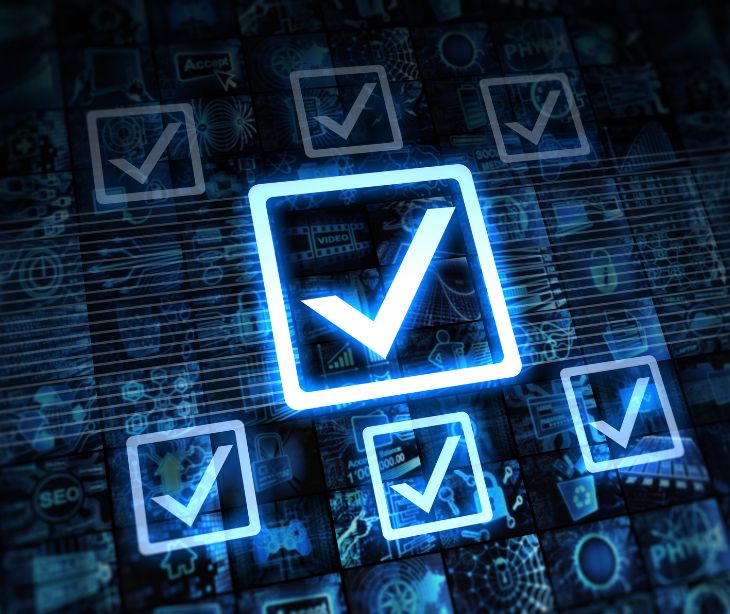
Health Information Trust Alliance (HITRUST) developed Common Security Framework (CSF) to help organizations manage information security and data privacy risks. The framework is designed to fortify your data security and regulatory adherence.
Related: What does HITRUST CSF certification mean?
Advantages of HITRUST compliance
There are several benefits for healthcare providers in achieving and maintaining HITRUST compliance:
- Enhanced data security: HITRUST compliance helps healthcare providers protect sensitive patient information through a structured approach to data security, reducing the risk of breaches and unauthorized access.
- Regulatory alignment: HITRUST's framework aligns with multiple regulations, focusing on HIPAA. HITRUST helps healthcare providers meet these requirements effectively and efficiently.
- Risk management: HITRUST helps identify, assess, and mitigate risks associated with information systems and data, ensuring a proactive stance on security threats.
- Better insurance terms: While not guaranteed, HITRUST compliance can lead to better insurance premiums. Insurers often view HITRUST-compliant organizations as low risk, which can translate into cost savings.
- Continuous improvement: HITRUST compliance is not a one-time achievement but an ongoing commitment to data security and privacy. Healthcare providers must continually assess and improve their practices to maintain compliance.
See also: HIPAA compliant email API for developers
How Can HITRUST Compliance Impact Your Healthcare Practice?
HITRUST compliance isn't just about ticking boxes on a checklist; it's a strategic approach that can positively impact your healthcare practice:
- Legal and financial protection: Compliance with HITRUST can protect you from costly penalties and lawsuits for data breaches or non-compliance.
- Competitive advantage: Achieving HITRUST compliance can distinguish a healthcare organization from its peers by demonstrating its dedication to data security and patient privacy, making it an attractive option for both patients and partners.
How to achieve HITRUST compliance
- Understand the HITRUST framework: Healthcare organizations should familiarize themselves with the HITRUST Common Security Framework (CSF). The CSF outlines the controls and requirements you need to implement for compliance.
- Assessment and gap analysis: Conduct an assessment and gap analysis to understand your organization's current state of security and privacy controls. This will help identify areas that require improvement to meet HITRUST requirements.
- Scope definition: Clearly define the scope of your HITRUST compliance initiative. Determine which systems and processes will be covered by the compliance effort.
- Create a HITRUST implementation plan: Develop a plan that outlines the steps, responsibilities, and timeline for achieving HITRUST compliance.
- Risk assessment: Conduct a risk assessment to identify and prioritize the risks associated with your information systems and data.
- Implement security and privacy controls: Begin implementing the security and privacy controls outlined in the HITRUST CSF. These controls cover access control, data protection, incident response, and risk management.
- Documentation: Maintain documentation of all security and privacy measures, including policies, procedures, and evidence of compliance.
- Third-party assessment: Engage an accredited HITRUST assessor or a third-party auditor to assess compliance with the HITRUST CSF. This assessment may result in HITRUST certification.
- Corrective action: Address any identified deficiencies or gaps based on the assessment findings. This may involve implementing additional controls, improving existing practices, or providing evidence of compliance.
- Continuous improvement: Establish processes for monitoring, auditing, and continually improving security and privacy practices.
- Certification process: Work closely with your HITRUST assessor to complete the certification process. The assessor will provide a report, and if your organization meets the requirements, you will receive HITRUST certification.
- Maintain compliance: After achieving HITRUST compliance or certification, organizations must maintain their compliance status. This includes regular assessments, audits, and updates to your security and privacy practices as necessary.
- Educate and train staff: Ensure that staff is well-informed and trained on the HITRUST requirements and the organization's security and privacy policies.
Related: SOC2 certification or HITRUST?
FAQs
Who needs to be HITRUST compliant?
HITRUST compliance is often pursued by organizations handling sensitive information, such as healthcare providers, insurers, and their business associates. It is especially relevant for entities that need to demonstrate a high level of security and regulatory compliance to partners and regulators.
Is HITRUST certification mandatory?
No, HITRUST certification is not mandatory. However, many organizations choose to pursue it to demonstrate their commitment to security and compliance, and some business partners or clients may require HITRUST certification as part of contractual agreements.
What challenges do organizations face with HITRUST compliance?
Common challenges include:
- The complexity of integrating multiple regulatory requirements.
- High costs of certification.
- Ensuring ongoing compliance and adapting to updates in the CSF.
Subscribe to Paubox Weekly
Every Friday we'll bring you the most important news from Paubox. Our aim is to make you smarter, faster.




